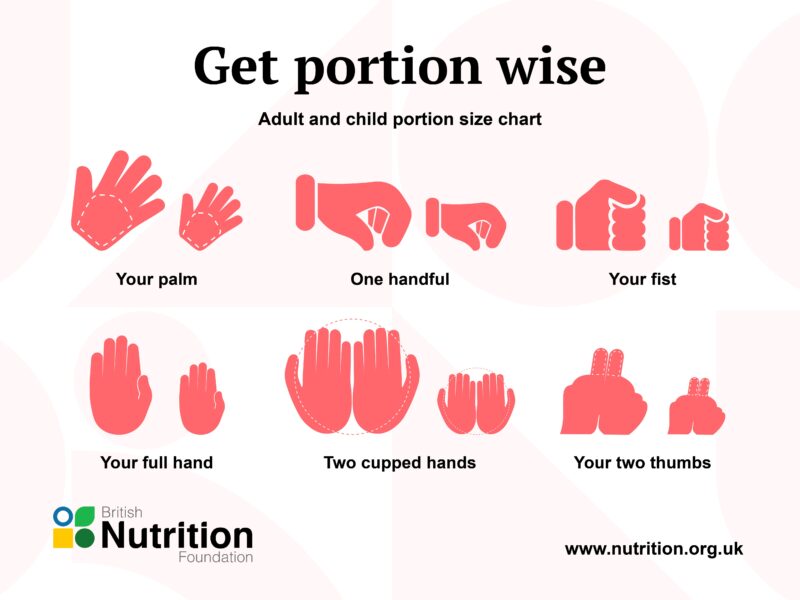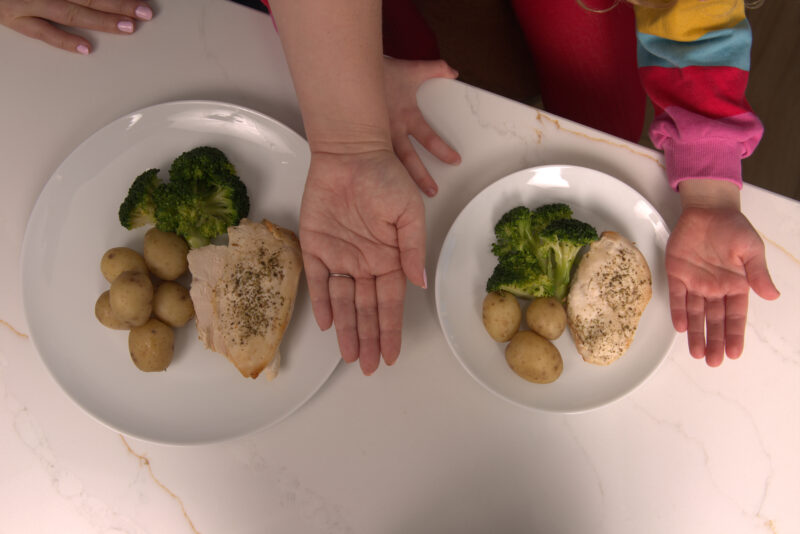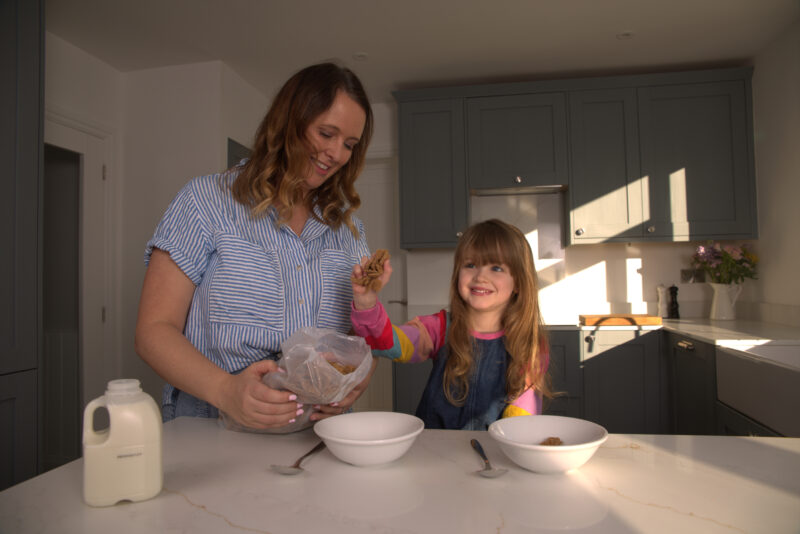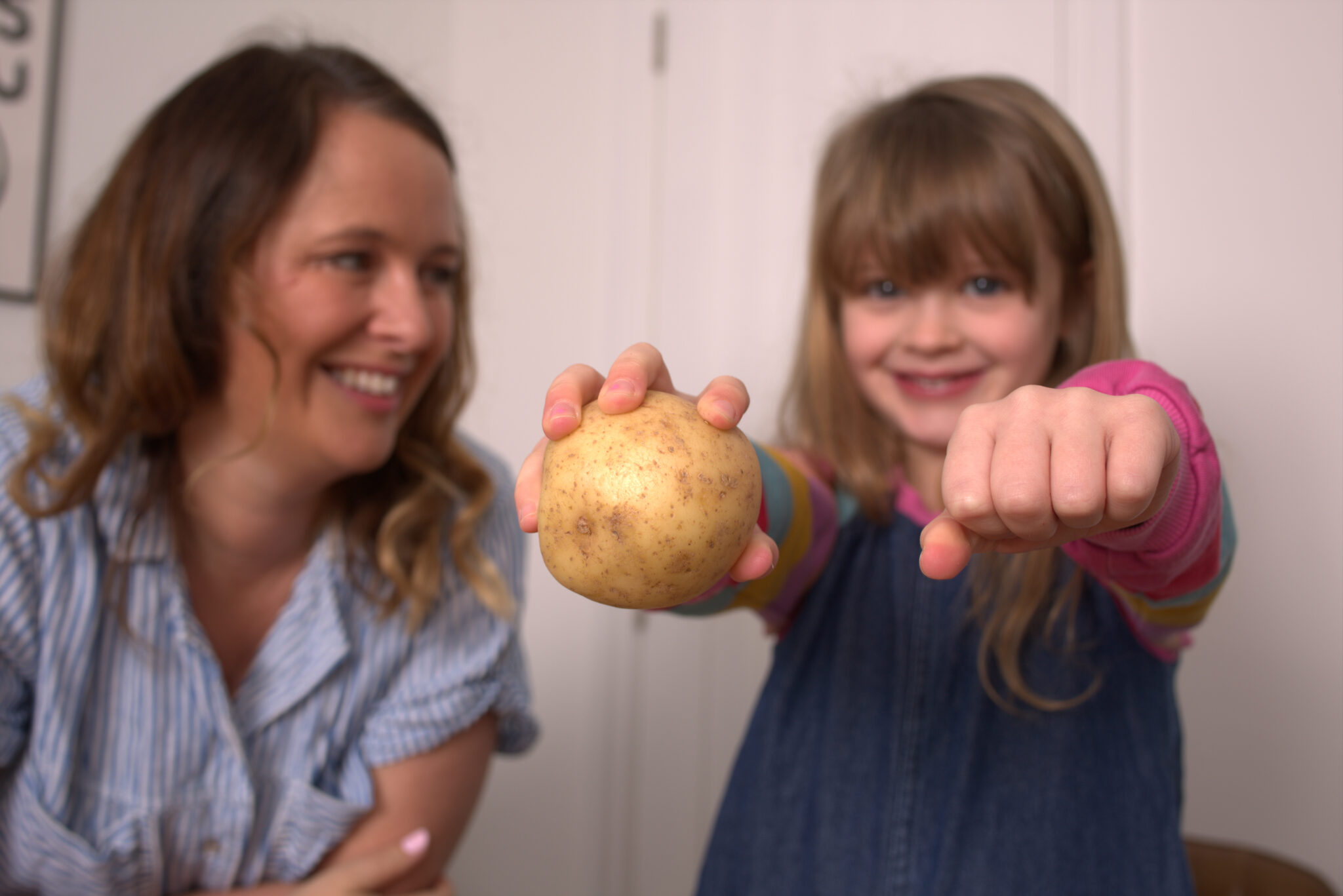The British Nutrition Foundation is helping parents wise up to their children’s portion size based on the results of a new survey.
The survey, conducted among parents across Great Britain with children aged under 18 years, reveal that over half (57%) of parents use ‘visual estimation’ when deciding how much food to serve themselves, while only 15% measure their portions and 14% follow package instructions. When thinking about their children’s portions, 51% of parents judge portion sizes based on how much their children usually eat and 16% say they let their children serve their own portions.
One fifth (20%) of parents say they will eat until they are full, while 12% say they often eat a little bit more after they’re full to finish off what’s on their plate. In contrast to their children where over a third (37%) of parents always or often make their children eat everything on their plate, and a further 23% sometimes insist their children finish everything they are served.
Bridget Benelam, Nutrition Communications Manager, from the British Nutrition Foundation said: “Being aware appropriate portion sizes of different types of food for adults and for children of different ages, can be a helpful way to get the balance of the diet right for ourselves and our children. In England, about a quarter of adults are living with obesity (25.9%) and 37.9% are classified as overweight, while over a fifth (22.1%) of 10-11 year old children are classified as living with obesity. Research has shown that large portions of food encourage both adults and children to eat more. So getting portion sizes right is an important element of having a balanced diet that supports a healthy body weight.”
 The survey, conducted by YouGov shows that the majority (63%) of parents surveyed feel confident in choosing the right portion sizes for their children, whereas nearly a third (32%) only sometimes or rarely feel confident in choosing the right portion size for their children.
The survey, conducted by YouGov shows that the majority (63%) of parents surveyed feel confident in choosing the right portion sizes for their children, whereas nearly a third (32%) only sometimes or rarely feel confident in choosing the right portion size for their children.
According to the survey, 7% of parents with children aged 4 year and under, and 11% of those with children aged 5-11, report giving their children the same portion sizes as they serve themselves, while over one in 10 (11%) parents with children aged under 4 years, and 15% of parents with children aged 5 to 11 years, say they let their children serve themselves. Only 8% of all parents say they use resources, such as guidelines or portion charts to determine appropriate portions sizes for their children at home; 13% of male and 8% of female survey respondents say they measure out their children’s portion sizes based on their age and height.
Benelam continued: “As a rule, children need portion sizes that reflect their body size and calorie requirements. So, we’re encouraging parents to check the portion sizes they are serving to their children. One way to get an idea of proportions is to compare yours and your child’s hands. For example, for baked potatoes we suggest a potato approximately the size of a fist, which will be larger for an adult, smaller for a younger child. If in doubt, start small and offer second helpings if your child is still hungry.”
 Second helpings
Second helpings
The British Nutrition Foundation survey also looked at how much children eat beyond their meal-time portions. Nearly half (48%) of parents reported that their children have second helpings at least once a week. Among these, 21% said it happens two to three times per week, while 11% noted it occurs more than four times weekly. For children aged 4 years and under, 56% of parents said second helpings occur between once a week and daily. This figure decreases to 52% for parents of children aged 5-11 years and 42% for those with children aged 12-16 years.
Over three quarters (77%) of all parents say that their children eat a dessert or pudding after their main meal at least once a week; of which 18% have a dessert or pudding every day and 17% have one between four and six days a week.
The survey found that over a quarter (28%) of parents feel they need more guidance on determining appropriate portion sizes for their children, while nearly half (46%) do not share this view. Younger parents are more likely to seek guidance, with 42% of those aged 25-34 expressing interest in more information, compared to 27% of parents aged 35-44 and 17% of those aged 45-54.
 Benelam said: “While we at the British Nutrition Foundation and others have guidance on portion sizes for adults, there’s very little information out there for parents and carers on appropriate children’s portion sizes. In this work we looked at research by child health experts that investigated children’s portions by age groups; four-six years, seven-10 years, 11-14 years and 15-18 years, and calculated portion sizes for a range of foods based on the calorie and nutrient requirements of each age group. Up to 14 years, these requirements for boys and girls are similar, but by 15-18 years, gender differences emerge, with boys typically needing larger portions. For example, a four–six-year-old’s portion of cooked pasta is 80g, while a seven–10-year-old’s portion increases to 120g. These measures can guide parents in offering appropriately sized portions to meet children’s nutritional needs without encouraging overeating.”
Benelam said: “While we at the British Nutrition Foundation and others have guidance on portion sizes for adults, there’s very little information out there for parents and carers on appropriate children’s portion sizes. In this work we looked at research by child health experts that investigated children’s portions by age groups; four-six years, seven-10 years, 11-14 years and 15-18 years, and calculated portion sizes for a range of foods based on the calorie and nutrient requirements of each age group. Up to 14 years, these requirements for boys and girls are similar, but by 15-18 years, gender differences emerge, with boys typically needing larger portions. For example, a four–six-year-old’s portion of cooked pasta is 80g, while a seven–10-year-old’s portion increases to 120g. These measures can guide parents in offering appropriately sized portions to meet children’s nutritional needs without encouraging overeating.”
Snacking
The survey also explored children’s eating habits outside of meal times, revealing that the majority of parents—88%—say their children snack between meals at least once a week. Among these, 38% report that their children snack daily. Daily snacking is more common in younger age groups, with 49% of parents of children under four years and 39% of parents of children aged 5-11 years saying their children snack every day.
Specific information about portion sizes is available from the British Nutrition Foundation’s website: https://www.nutrition.org.uk/creating-a-healthy-diet/portion-sizes/.





